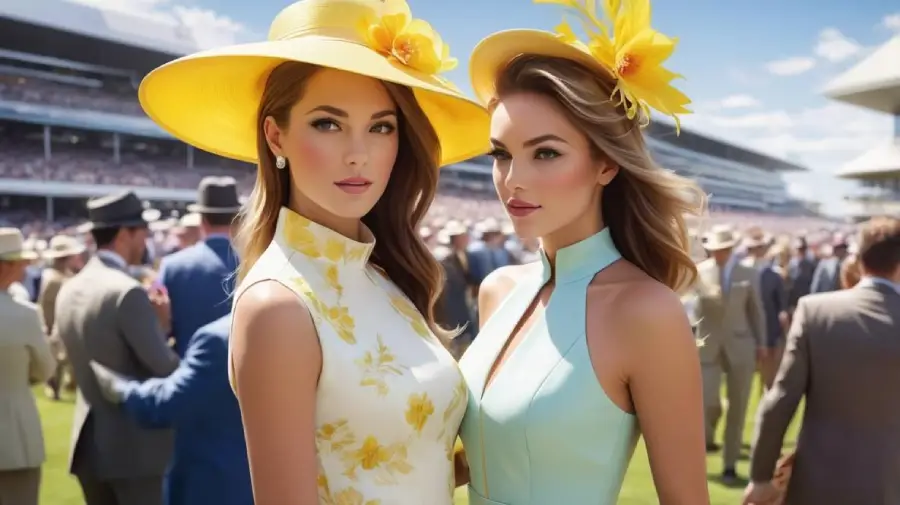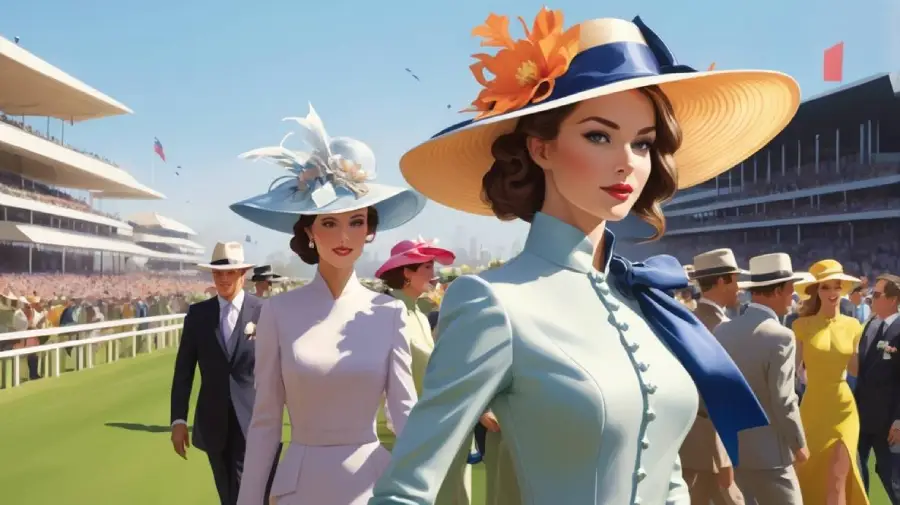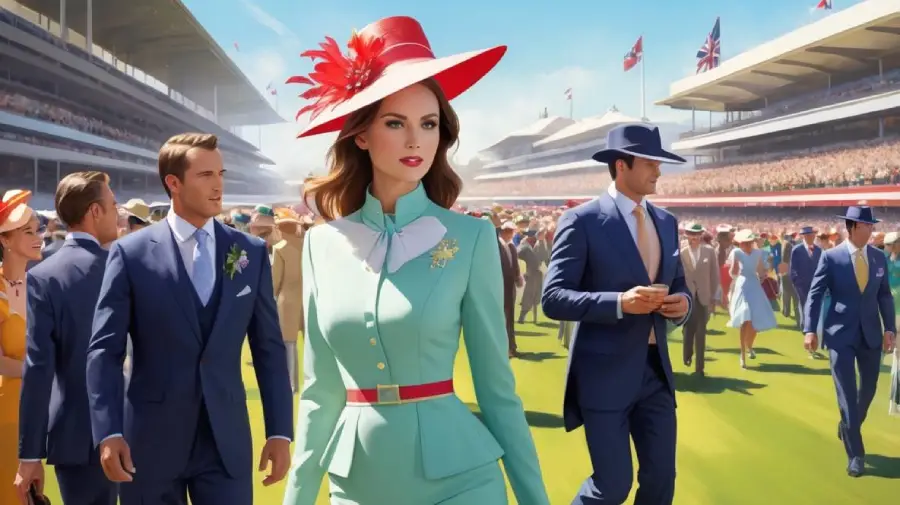Melbourne Cup
The Melbourne Cup: The Prestigious Horse Race That Stops a Nation
The Melbourne Cup is more than just a horse race—it’s a grand celebration of tradition, competition, and Australian culture. Known as “the race that stops a nation,” it is a spectacle that captivates millions of people worldwide. Held annually on the first Tuesday of November, the event has grown into an iconic occasion that reflects the spirit of Australia, blending sport with fashion, social activities, and national pride.
In this article, we will explore the Melbourne Cup’s rich history, cultural significance, race structure, and its place in contemporary Australia. So, saddle up and join us on this journey through the captivating world of the Melbourne Cup.

[su_box title=”Melbourne Cup – Next years” box_color=”#fb0400″]
- Melbourne Cup 2025 – Tuesday, November 4
- Melbourne Cup 2026 – Tuesday, November 3
- Melbourne Cup 2027 – Tuesday, November 2
- Melbourne Cup 2028 – Tuesday, November 7
[/su_box]
Historical Background: The Birth of a Tradition
Inception: The Beginning of an Icon
The Melbourne Cup was first held on November 7, 1861, at the Flemington Racecourse in Melbourne. It was the brainchild of Melbourne businessman, and former Melbourne Jockey Club secretary, William Clark. The inaugural race featured 17 horses, with a horse named Archer emerging victorious. Archer became an instant legend, crossing the finish line first and marking the start of a new Australian tradition.
At its inception, the race was run over two miles (3.219 km), a distance that would later be standardized to 3,200 meters in 1972, further cementing the Melbourne Cup’s status as a global racing event. Since then, the race has been held annually, with few exceptions due to the disruptions caused by the two World Wars.
Evolution: From Local Race to Global Phenomenon
While the first few Melbourne Cups were relatively modest, the event quickly grew in stature. It became clear that the race had captured the imagination of Australians, as well as international racing enthusiasts. Over the years, the prize pool expanded, the event’s media coverage grew, and the Melbourne Cup became a key component of the Melbourne Spring Racing Carnival.
Today, the Melbourne Cup stands as a major international event, attracting some of the world’s best horses, trainers, and jockeys. However, its enduring charm remains rooted in the rich history and traditions established over 160 years ago.
Significant Milestones: Legendary Horses and Jockeys
Throughout its history, the Melbourne Cup has seen a number of legendary horses and jockeys. Some standouts include Makybe Diva, the horse that won three consecutive Melbourne Cups from 2003 to 2005—a record that remains unmatched.
Bobby Lewis is another iconic figure in the history of the race, holding the record for the most Melbourne Cup wins by a jockey. He won the race four times between 1902 and 1927, cementing his legacy as one of the sport’s greats.

Cultural Significance: More Than Just a Race
Public Holiday: A Day of National Importance
In Victoria, Melbourne Cup Day is a public holiday, a testament to the event’s importance in Australian culture. While the race itself is the focal point, Melbourne Cup Day is a celebration of much more than just horse racing. People from all walks of life come together to enjoy the festivities, with many taking the day off to watch the race with family and friends.
A National Celebration: The Race That Stops a Nation
As the clock ticks down to 3 p.m. on the first Tuesday of November, millions of Australians tune in to watch the race. Whether they are racing enthusiasts or casual observers, the Melbourne Cup brings the entire nation together. It’s a time when workplaces, schools, and even homes pause for those few minutes of excitement.
This deep cultural connection to the event is highlighted by Mark Twain’s famous remark, which emphasized the race’s power to unite a country. The Melbourne Cup has become a national celebration that transcends sport, offering Australians a sense of pride and unity.
Race Structure: The Mechanics of the Melbourne Cup
Format: A Handicap Race for All
The Melbourne Cup is a handicap race, meaning that horses are assigned different weights based on their past performances and abilities to ensure a level playing field. This format allows for a highly competitive race, with both seasoned horses and newcomers given an equal shot at victory.
A maximum of 24 horses can compete in the Melbourne Cup, which is typically contested by a mix of local and international thoroughbreds. As a result, the event is often seen as one of the most challenging and exciting races in the world.

Prize Money: A Lucrative Pursuit
With a total prize pool of approximately AUD $8 million, the Melbourne Cup is one of the richest horse races globally. This lucrative financial incentive draws the world’s best horses, jockeys, and trainers to the Flemington Racecourse each year. The substantial prize money helps to keep the competition fierce, attracting top talent from both Australia and overseas.
Contemporary Context: Melbourne Cup Today
Current Favorites: Who’s Leading the Pack?
As of November 2024, the top contenders for the Melbourne Cup include Buckaroo and Vauban, both priced at $6.50. Other potential winners include Absurde and Onesmoothoperator, both at odds of $9. With such fierce competition, the Melbourne Cup is as unpredictable as ever, adding to its excitement.
Betting Trends: A Major Economic Force
Betting plays a crucial role in the Melbourne Cup, with millions of dollars wagered annually. The race attracts not only seasoned gamblers but also casual punters, all eager to try their luck. This widespread betting interest highlights the race’s global appeal and financial impact.
In 2024, large sums were placed on a range of horses, signaling the high level of public interest in the event. For many, the excitement of the race is amplified by the thrill of placing a bet and potentially winning big.
Event Overview: The Melbourne Cup Carnival
A Four-Day Celebration: Beyond the Melbourne Cup
While the Melbourne Cup itself is the main event, the Melbourne Cup Carnival is a four-day celebration that features other prestigious races, such as Derby Day and Oaks Day. Together, these events form the heart of Melbourne’s Spring Racing Carnival, which attracts around 300,000 attendees each year.
Each day of the carnival has its own distinct flavor and style, with Derby Day being known for its classic fashion and high-profile attendees, while Oaks Day is often referred to as “Ladies’ Day” due to its emphasis on women’s fashion.
Fashion and Festivities: Dressing for Success
The Melbourne Cup is as much a fashion event as it is a sporting one. Attendees often dress in extravagant outfits, with many competing for coveted prizes for best-dressed man and woman. Fashion parades, style competitions, and VIP marquees all contribute to the festive atmosphere, making the event a feast for the eyes as well as the senses.
For many, attending the Melbourne Cup is as much about the social experience as it is about the race itself, with guests enjoying fine dining, champagne, and celebrity spotting throughout the day.
The Enduring Legacy of the Melbourne Cup
The Melbourne Cup is far more than just a horse race—it’s a cultural institution. From its humble beginnings in 1861 to its current status as one of the richest and most prestigious races in the world, the Melbourne Cup has become synonymous with Australian culture, celebration, and community spirit.
Whether you’re watching it at home, attending the carnival, or placing a bet, the Melbourne Cup offers something for everyone. It represents the best of Australian sporting tradition and continues to captivate audiences both locally and globally.


